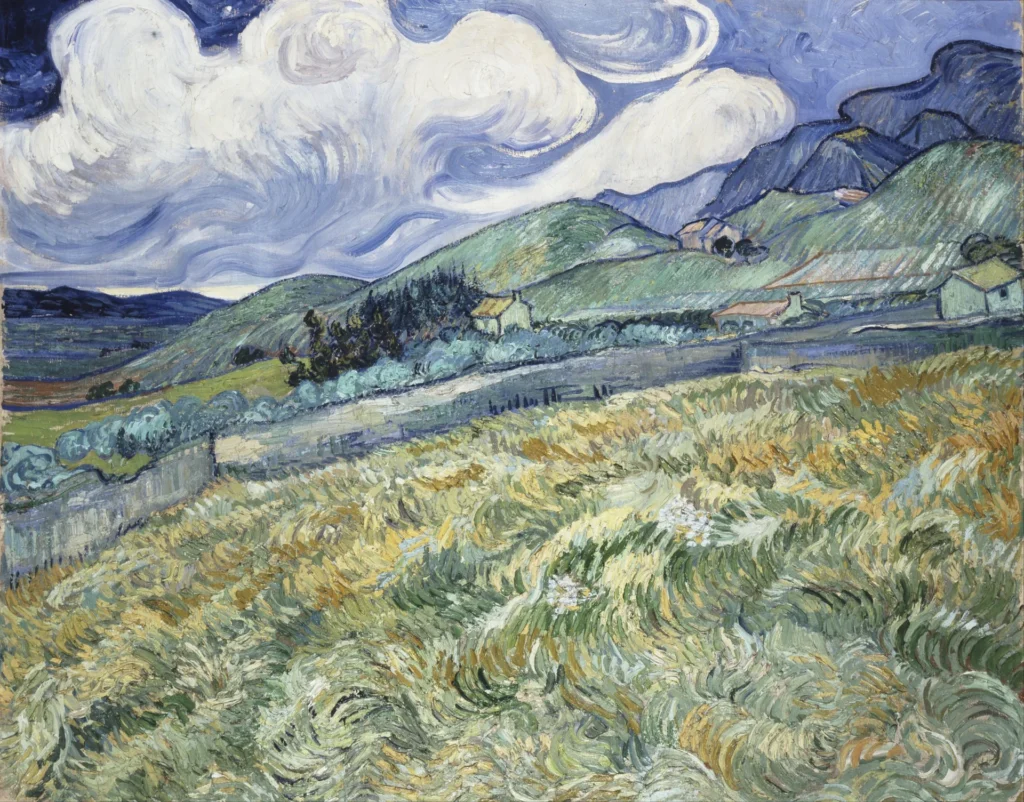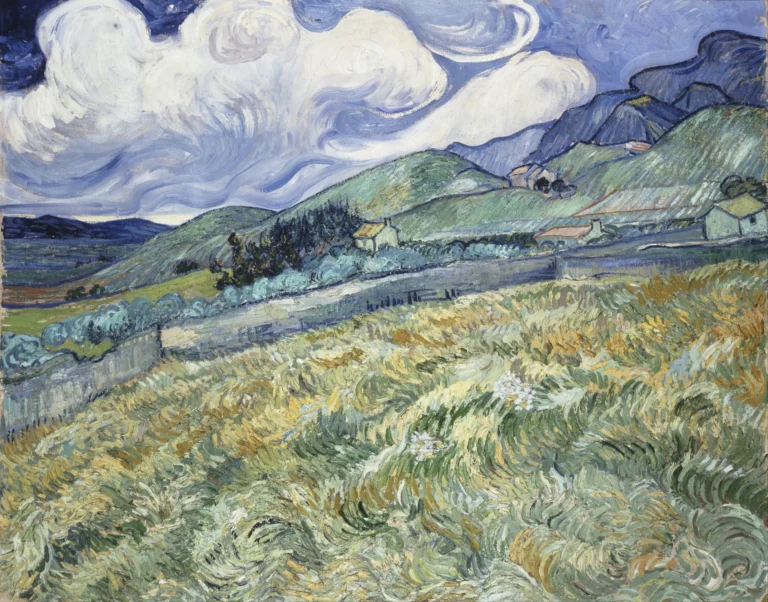Landscape From Saint-Rémy
Created by Vincent van Gogh in 1889 while he was a patient at the Saint-Paul-de-Mausole asylum, Landscape from Saint-Rémy reveals the artist's profound engagement with nature and his emotional state. The painting features swirling clouds darkening a vibrant landscape, depicted through Van Gogh's energetic brushstrokes. The scene underscores the contrast between the small human figure and the vastness of nature, inviting viewers to reflect on humanity's place within the grand tapestry of the environment.
Year 1889
About the Artwork
Vincent van Gogh painted Landscape from Saint-Rémy while grappling with mental health issues at the Saint-Paul-de-Mausole asylum in southern France. This period was both tumultuous and creatively prolific for the artist, leading to around 150 works, many inspired by the view outside his window. The painting is imbued with the emotional intensity characteristic of Van Gogh's style, capturing not only the external beauty of the landscape but also his internal struggles. The vibrant swirling clouds evoke turmoil and movement, while the golden wheat fields signal both prosperity and the passage of time. This work stands as a testament to his resilience and dedication to art during one of the most challenging periods of his life.
Did You Know
During his time at the Saint-Paul-de-Mausole asylum, Vincent van Gogh created approximately 150 artworks, including numerous landscapes that depict the view from his room. This intense productivity resulted from his isolation and a deep connection to nature.
In Landscape from Saint-Rémy, the fields and swirling clouds symbolize Van Gogh’s emotional turmoil and connection to the earth. The small figure of a harvester underscores the fleeting nature of humanity against the backdrop of vast and powerful landscapes.
Van Gogh’s landscape paintings, including Landscape from Saint-Rémy, are pivotal in the evolution of modern art. His innovative use of color and bold brush strokes influenced many subsequent art movements, including Expressionism and Abstract art.










